1. Current Situation
1.1. Value chain integration
1.1.1. Vertical
1.1.1.1. Farmers & food companies are disconnected by middle-agent / collectors
1.1.1.2. Large number of middle-agents fragmenting the value chain
1.1.2. Horizontal
1.1.2.1. Small-scale farming predominant
1.1.2.2. Large number of small players fragmenting the market
1.2. Information flow
1.2.1. Demand visibility
1.2.1.1. Farmers are disconnected from the market
1.2.1.2. Food companies have limited visibility of the market demand
1.2.2. Supply visibility
1.2.2.1. Food companies have limited visibility of current supply
1.2.3. Forecasting & Planning
1.2.3.1. Lack of a standard methodology for demand forecasting & planning
1.3. Food waste
1.3.1. Cold chain
1.3.1.1. Broken links in the cold chain
1.3.1.2. Mainly for export products
1.3.2. Speed to market
1.3.2.1. Slow - fragmented value chain
1.3.2.2. Slow - underdeveloped multi-modal infrastructure
1.3.2.3. Slow - manual handling & pre-processing
1.3.3. Post-harvest pre-processing
1.3.3.1. Post-harvest pre-processing at farm
1.4. Logistics network
1.4.1. Collection network
1.4.2. Distribution network
1.5. Market & consumer
1.5.1. Organic food
1.5.1.1. Traceability
1.5.1.2. End-to-end quality control
1.5.1.3. Trust & credibility
1.5.2. Domestic market
1.5.2.1. Perception
1.5.2.2. Whoever wins the domestic market, wins the game
1.5.3. Export market
1.5.3.1. Dual purpose - profitability and/or branding
1.5.4. Product branding
1.5.4.1. Vietnam agriculture produce have no brand
2. Good practices
2.1. Piloting models
2.1.1. Modern cooperative model
2.1.1.1. Enhance the mgt. role of cooperative
2.1.1.2. Increase farmer's value add with pre-processing capability
2.1.1.3. Protect farmers from price gouging
2.1.1.4. Strengthen farmer negotiation power
2.1.2. Large scale farming model
2.1.2.1. Food company works directly with farmers without going through collectors & middle agents
2.1.2.2. One big farm, owned by many farmers
2.1.2.2.1. Standard production process
2.1.2.2.2. End-to-end quality control
2.1.2.2.3. Commercial incentive
2.1.2.2.4. Product branding
2.1.2.2.5. Access to technology know-how
2.2. Ideas & proposals
2.2.1. Collection network development
2.2.1.1. Centralize collection
2.2.1.1.1. 1. Regional logistics hub
2.2.1.1.2. 2. Provincial collection center
2.2.1.2. Centralize pre-processing zones
2.2.1.3. Innovation hub
2.2.1.3.1. Research, R&D, logistics activities can benefit from economy of scale
2.2.1.4. Leverage on waterways network
2.2.2. Distribution network development
2.2.2.1. Distribution center closer to market
2.2.2.2. Centralize distribution
2.2.3. Vietnam agricultural product branding
2.2.3.1. Large scale farming, consistent quality control
2.2.3.2. Connect farmers to food companies
2.2.3.3. Investment in branding & marketing
2.2.3.4. Consumer education
2.2.3.5. Farmer education
3. Considerations
3.1. Risk management
3.1.1. Risk of centralization & economy of scale in agricultural production
3.1.2. Reduce risk for food companies who invests in large scale farming model
3.1.3. Risk for companies investing in organic food
3.2. Government role
3.2.1. Enhance the role of government
3.2.1.1. Strategic restructuring of Mekong Delta land use
3.2.1.2. Logistics infrastructure development
3.2.1.3. Vertical & horizontal integration incentive
3.2.2. Laws & regulations regarding land use rights
